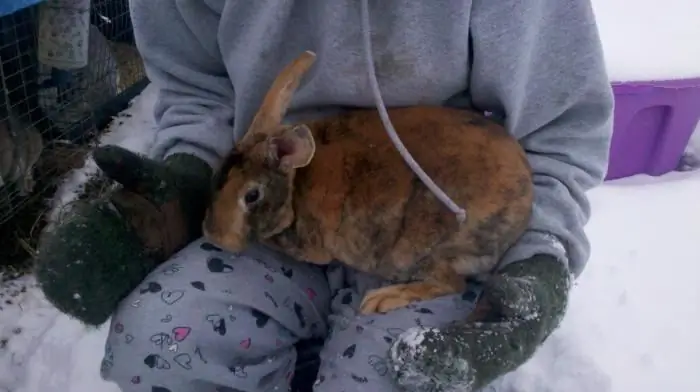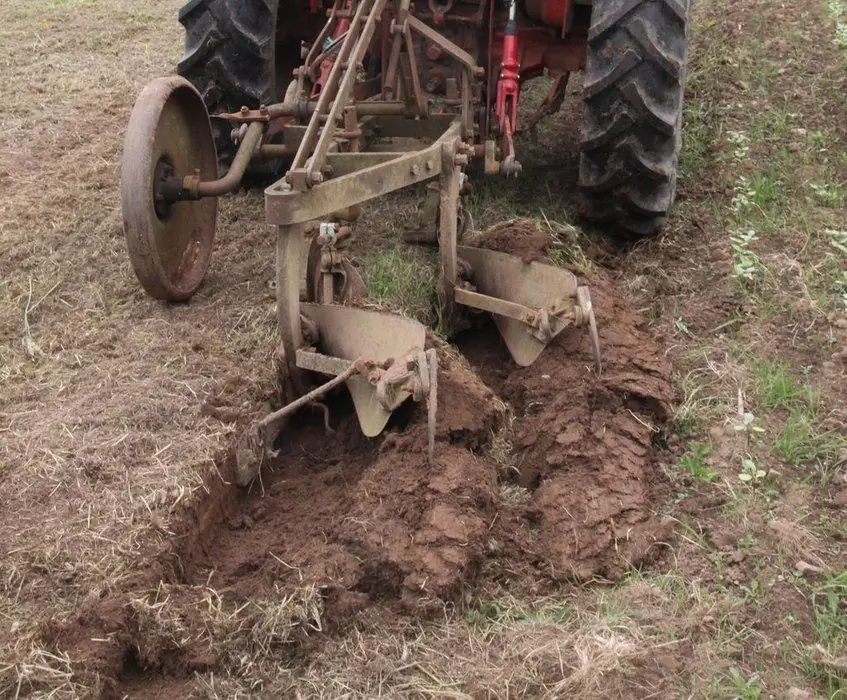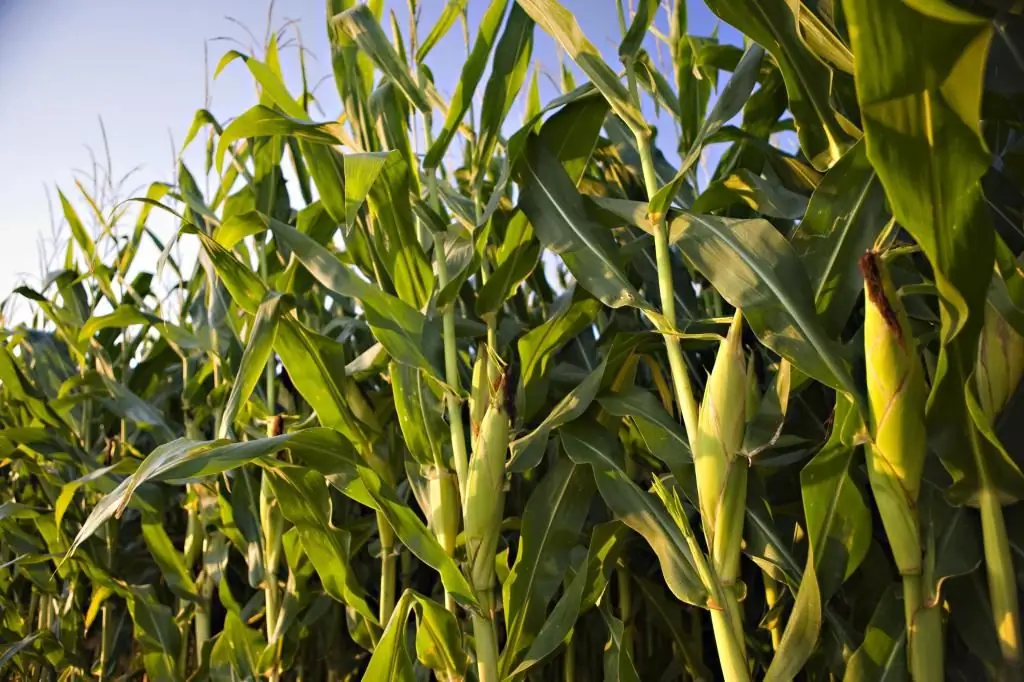2026 Author: Howard Calhoun | [email protected]. Last modified: 2025-01-24 13:10:41
Winter rye is one of the most common grain crops in our country. Every year, more than 1 million hectares of arable land are allocated for this agricultural plant in our country. The technology for cultivating winter rye, of course, must be followed exactly in the fields. This is the only way to get good harvests of this crop.
Use
The main consumer of this crop in our country is, of course, the food industry. Rye in Russia is mainly used for baking bread. Starch can also be made from the grain of this crop. Of course, rye flour is also produced for free sale. This product is also used in the household mainly for baking.

Biological features
Rye can grow in many regions of the planet. This crop is grown in Russia, Kazakhstan, Ukraine, Belarus. The technologies for growing winter rye in all these areas are similar and were once developed, of course, taking into accountbiological characteristics of this plant.
Rye culture is undemanding and unpretentious. Its main advantage is resistance to low temperatures. Even in snowless winters, this plant in the zone of the tillering node is able to tolerate cooling down to -25 ° C and below. Rye seeds germinate already at +1-2 °C. Seedlings of this crop appear in the fields 4-7 days after sowing.
Also, rye is undemanding to the composition of the soil and predecessors. The only thing is that in order to get good yields of this crop, it is necessary to carry out the most thorough basic and pre-sowing soil preparation on the fields.
Another absolute advantage of this crop is drought resistance. The root system of this plant is better developed than that of most other cereals cultivated in the fields. Therefore, inflorescences and green mass of rye almost never experience a lack of nutrients. The root system of this culture is fibrous. At the same time, its main mass is in the soil at a depth of up to 25 cm. But some rye roots can reach a depth of 1.5 m or more.

A feature of this crop is, among other things, the fact that one such plant is capable of producing up to 4-6 fruiting stems. Under favorable conditions, the number of the latter can increase significantly (up to 50 pieces). The growing season for winter rye is 270 days on average. In the northern regions, it can last up to 360 days. In any case, these varieties of rye ripen a few days earlier than winter wheat.
Featurescrop rotation
To its predecessors, this crop, as already mentioned, is not too demanding. However, the technologies for cultivating winter rye used today in the fields require, of course, including the observance of a certain crop rotation. It is believed that the best predecessors for this culture are:
- potato;
- corn and sunflower;
- bean-oat mixes;
- lupine;
- linen;
- clover;
- pure steam.
Rye is one of the few crops that can be grown for several years in the same place.

Soil preparation
This procedure should be approached responsibly when cultivating rye. If the predecessors of this crop are plants such as sugar beet or, for example, potatoes, the main tillage for it is usually carried out to a depth of 10-12 cm. After perennial legumes, plowing is done by 25-30 cm. rye is processed to a depth of 15-18 cm. Pre-sowing treatment for such varieties is carried out to the depth of seed placement.

Varieties
Selection work with winter rye in our country is, of course, quite extensive. A lot of good varieties of this crop were bred by domestic specialists. The best of them are considered:
- Tatar 1.
- Saratovskaya 7.
- Bezenchukskaya 87.
- Relay of Tatarstan.
All these varieties are resistant to lodging, drought tolerance and of course high yields.
Sowing dates
According to the rye cultivation technologies developed by specialists, it is necessary to start planting this crop in autumn when the average daily air temperature reaches 15-16 °С. With such planting dates, the plants are further less damaged by the Hessian and Swedish fly. In Russia, the sowing of winter rye most often begins in the period from August 25 to September 10.
Sowing
Planting material of winter rye is dressed before being introduced into the soil to prevent infection by pests and pathogens. The seeding rate of this crop for different regions of the country may not be the same. In any case, the seeds are usually planted in the field in such a way that there will be up to 500-600 maturing plants per 1 m2 subsequently. To achieve this result, 4-5 million seeds per hectare can be sown on different types of land.
Rye can be planted in the fields in an ordinary, cross and narrow-row way. In the first and second cases, a distance of 15 cm is left between the rows, in the last - 7-7.5 cm.
When planting rye, among other things, it is important to choose the right seed placement depth. This indicator depends primarily on the structure of the soil in this particular field. Close up seeds of winter rye to the depth:
- 2-3 cm - on heavy soils;
- 4-5 cm - on lungs;
- 3-4 cm - medium.
If by the time the rye seeds are planted the topsoil is dried up, the planting depth is increased by 1-2 cm.

Winter rye cultivation technology: fertilizer use
This crop is relatively undemanding to the composition of the soil. However, the use of fertilizers, of course, can significantly increase its yield.
Intensive technologies for the cultivation of winter rye involve the use of both main types of top dressing for crops - organic and mineral. After grain and cereal perennials, the fields set aside for winter rye are usually fertilized using organic matter in the amount of 20-30 t/ha. In spring, with active resumption of vegetation, winter rye is fertilized with nitrogen in the amount of 90-100 kg/ha. When sowing between rows, phosphorus fertilizers are applied in the amount of 10-15 kg/ha. The same top dressing is sometimes used in the fall during the main treatment at a dosage of about 50 kg / ha. Potash fertilizers are also applied to the fields with rye during the main processing in the amount of 90-120 kg/ha. At a pH below 5.5, among other things, the soil is limed.
Care during the growing season
To get a good harvest of winter rye, a number of various agrotechnical measures should be taken during its development. Immediately after sowing seeds in the fields, for example, rolling is carried out. This procedure improves the contact of seeds withsoil and provides capillary rise of moisture. After its implementation, the grain in the ground swells faster, as a result of which shoots subsequently appear more friendly. Also in autumn, fields with rye are treated with preparations designed to combat snow mold.
In winter, snow retention is carried out in areas with this crop. Thus, young plants are protected from freezing. Empirically, for example, it was found that a snow cover 30-40 cm thick is able to protect rye even in the most severe frosts.

In the spring, the fields with this crop are harrowed. In this case, standard machines are used for the cultivation of winter rye. That is, harrowing is carried out by tractors with needle attachments. This procedure allows you to level the topsoil, enrich it with moisture and oxygen. As a result, the percentage of seed germination increases, and the sprouts begin to actively develop. The soil is harrowed after the snow melts and the soil dries across the rows.
At the beginning of growth, rye, among other things, needs nitrogen fertilizers. Such dressings are applied in the root way or diagonally with respect to the rows. In the period from the beginning of the tillering of the rye until the formation of the tube, among other things, the fields are treated with herbicides. The presence of weeds in the field with this crop, unfortunately, leads to a significant decrease in yield.
Fight disease
Rye is a rather unpretentious culture. However, in the process of growing it, like any other agriculturalplant, can be affected, including various kinds of insects or microorganisms. Therefore, technologies for the cultivation of winter rye for grain include, among other things, pest control. Most often, this crop is affected during cultivation:
- root rot;
- snow mold;
- powdery mildew.
To combat various pathogens and pests of rye, the fields are treated with fungicides. It can be, for example, "Tilt" or "Fundazol". In some cases, when growing winter rye, retardants are also used. Such funds prevent subsequent lodging of rye. And this, in turn, greatly facilitates the procedure for cutting plants for grain.
Harvesting
This operation in the fields with winter rye, of course, must be started on time. In no case should you be late with the harvest of this crop. Otherwise, the grain will crumble and remain on the field. The harvesting of winter rye in the fields usually lasts no longer than 10 days. It is especially important to quickly harvest this crop in wet weather. At such a time, rye, unfortunately, can germinate right on the vine. And this, of course, will also lead to a deterioration in the quality of grain and a decrease in the yield of this crop.
Technologies for the cultivation of winter rye in our country in most cases are used approximately the same. It is allowed to harvest this culture both by direct combining and by a separate method. When using the first method, harvesting of winter rye begins in the periodfull maturity at grain moisture content of 20%. In this case, the Yenisei, Niva, Don-1500 combines are driven onto the field.
Separate harvesting of winter rye is carried out in the phase of wax ripeness of the grain with its moisture content of 35-40%. Mow the plants in this case with reapers. Rolls using this technology are laid on the stubble. Threshing begins after the grain has dried, that is, approximately 3-5 days after mowing. Start this two-phase harvest 5-10 days before direct combining.

In case of lodging of rye in the fields, when using any harvesting technique, the cutting height of plants should be minimal. The technology of cultivation of winter rye involves the use, as already mentioned, of special preparations to prevent the occurrence of such a situation. However, some varieties of rye, including high-yielding ones, unfortunately still show a strong tendency to lodging. In this case, when harvesting, the plants are cut at a height of no more than 10 cm.
Recommended:
Fodder grain: quality and storage. How is feed grain different from regular grain?

The development of animal husbandry makes it necessary to increase the amount of feed for livestock. According to statistics, about half of the total average annual grain harvest is spent for these needs. At the same time, 15-20 million tons of this mass falls on wheat. To reduce the cost of livestock products, instead of more expensive food cereals, feed grain is used
What to feed a rabbit in winter? Breeding rabbits in winter. Keeping and feeding rabbits in winter

We all know this catchphrase "Rabbits are not only valuable fur …", but even to get this fur, not to mention 3-4 kilograms of easily digestible dietary meat, you need to make a lot of effort
Mine grain dryer: device, principle of operation. Grain drying equipment

The task of any grain drying equipment is to provide high-quality blowing of grain and oilseeds to reduce moisture. This allows you to store the product for a long time. Shaft-type grain dryers are currently in great demand. They provide uniform and stable blowing of the grain
Spring wheat: cultivation technology, features of sowing, cultivation and care

About 35% of all grain plantings on the planet today falls on wheat. In purchases, the share of such grain is 53%. Technologies for growing spring wheat in Russia can be used differently. But when cultivating this crop, crop rotation must be observed and careful preliminary preparation of the soil must be carried out
Corn: cultivation technology, features of planting, cultivation and care

Every one of our compatriots has seen and tasted corn. However, not everyone thinks about how important culture it is. Therefore, tell about it in more detail. We will also dwell briefly on the technology of corn cultivation - it will be very useful for novice farmers to learn about this

